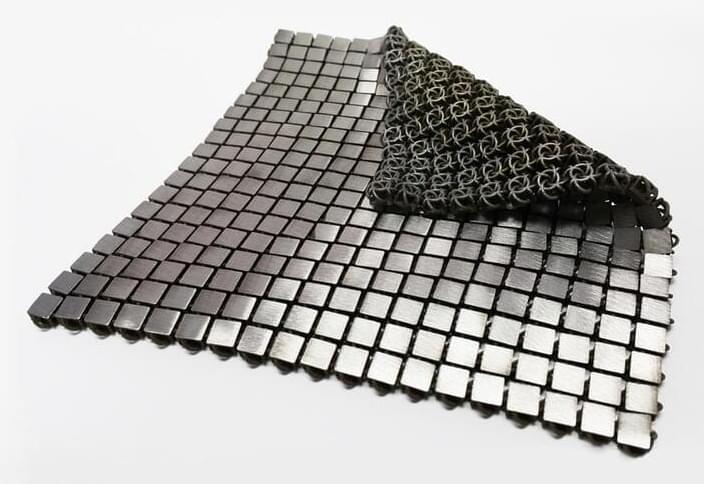Free-flying mosquitoes gravitate toward pads that emit carbon dioxide, which is found in human breath.


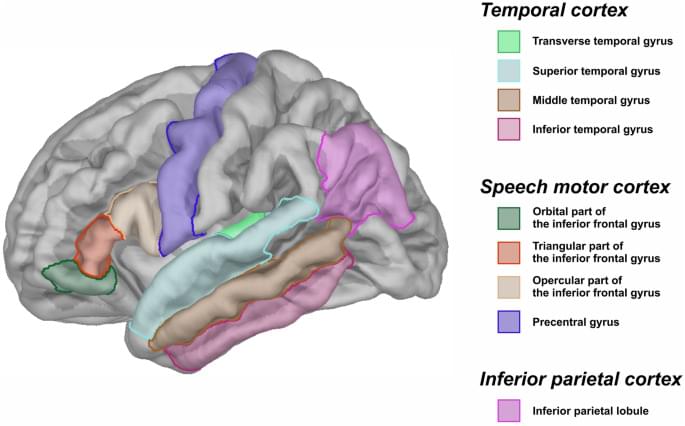
Language impairment is comorbid in most children with Autism Spectrum Disorder (ASD) but its neural basis is poorly understood. Using structural magnetic resonance imaging (MRI), the present study provides the whole-brain comparison of both volume-and surface-based characteristics between groups of children with and without ASD and investigates the relationships between these characteristics in language-related areas and the language abilities of children with ASD measured with standardized tools. A total of 36 school-aged children participated in the study: 18 children with ASD and 18 age-and sex-matched typically developing controls. The results revealed that multiple regions differed between groups of children in gray matter volume, gray matter thickness, gyrification, and cortical complexity (fractal dimension).

This year marks the 100th anniversary of Edwin Hubble’s observation of a pulsating star called a Cepheid variable in the Andromeda nebula. The star was surprisingly faint, implying that it was very far away and that Andromeda must be a separate galaxy—the first evidence that our Milky Way is not alone. Hubble went on to uncover other galaxies and found that they were all moving away from us—a cosmic expansion characterized by the so-called Hubble constant. Astronomers have now used another star, an exploding supernova whose light was bent as it traveled to Earth, to probe the expansion [1]. By determining a time delay between different images of the supernova, the team has recovered a value of the Hubble constant that is lower than estimates based on Cepheids and on other distance markers. However, the error bars are large for the new measurement, so astronomers will need more observations to make lensed supernovae a precision speed check on cosmic expansion.
A lensed supernova is created by the light-bending power of gravity. When a supernova is behind a galaxy, relative to Earth, the light from the exploding star gets curved around the galaxy by the galaxy’s gravity. This action both distorts the star’s image and magnifies it, just like a magnifying glass. Sometimes this lensing can produce multiple images of the star, with each appearing at a different point in the sky. The light from such a set of images travels to Earth along different paths, and so arrives at Earth at different times. In 1964, the astronomer Sjur Refsdal proposed using the time delays to measure the Hubble constant. But detecting a multi-imaged supernova has proved tricky.
Luck finally came 50 years after Refsdal’s proposal. In a Hubble space telescope image from December 2014, Patrick Kelly, then at the University of California, Berkeley, and now at the University of Minnesota, spotted four lensed images of the same supernova [2]. The team was unable to determine the exact time delays between these images, but from previous observations of this part of the sky, Kelly and his colleagues predicted that a fifth image was on the way. This expectation was based on the spotted supernova sitting behind a galaxy cluster, rather than a single galaxy, so the supernova light had multiple paths to reach Earth. The astronomers kept a steady watch, and sure enough the fifth image appeared in December 2015, roughly 376 days after the other four images. This long time delay, which was caused by the cluster’s large mass density, was a boon to the cosmic expansion measurement.
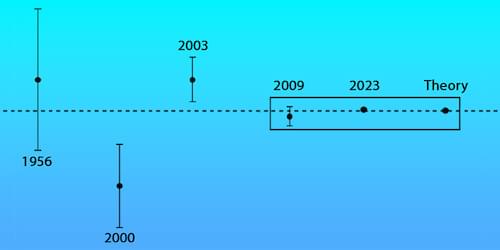
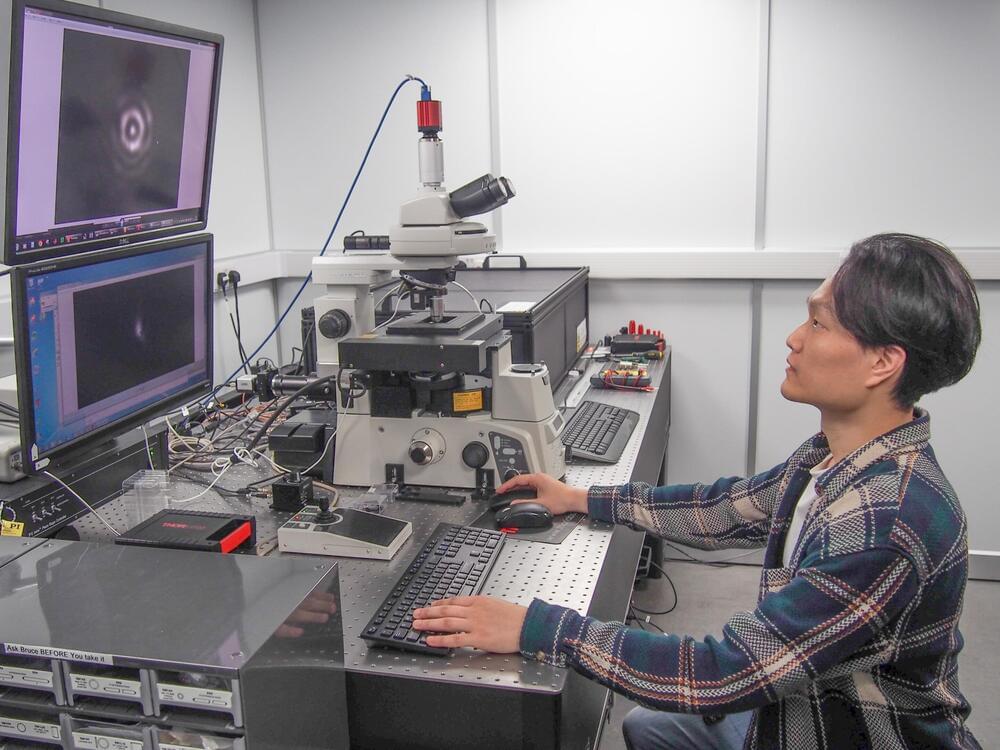
Optical imaging and metrology techniques are key tools for research rooted in biology, medicine and nanotechnology. While these techniques have recently become increasingly advanced, the resolutions they achieve are still significantly lower than those attained by methods using focused beams of electrons, such as atomic-scale transmission electron spectroscopy and cryo-electron tomography.
Researchers at University of Southampton and Nanyang Technological University have recently introduced a non-invasive approach for optical measurements with atomic-scale resolution. Their proposed approach, outlined in Nature Materials, could open exciting new possibilities for research in a variety of fields, allowing scientists to characterize systems or phenomena at the scale of a fraction of a billionth of a meter.
“Since the nineteen century, improvements of spatial resolution of microscopy has been a major trend in science that has been marked with at least seven Nobel Prizes,” Nicolay I. Zheludev, one of the researchers who carried out the study told Phys.org. “Our dream was to develop technology that can detect atomic scale events with light, and we have been working on this for the last three years.”

A machine learning-based method developed by a Mount Sinai research team allows medical facilities to forecast the mortality risk for certain cardiac surgery patients. The new method is the first institution-specific model for determining the risk of a cardiac patient before surgery and was developed using vast amounts of Electronic Health Data (EHR).
Comparing the data-driven approach to the current population-derived models reveals a considerable performance improvement.
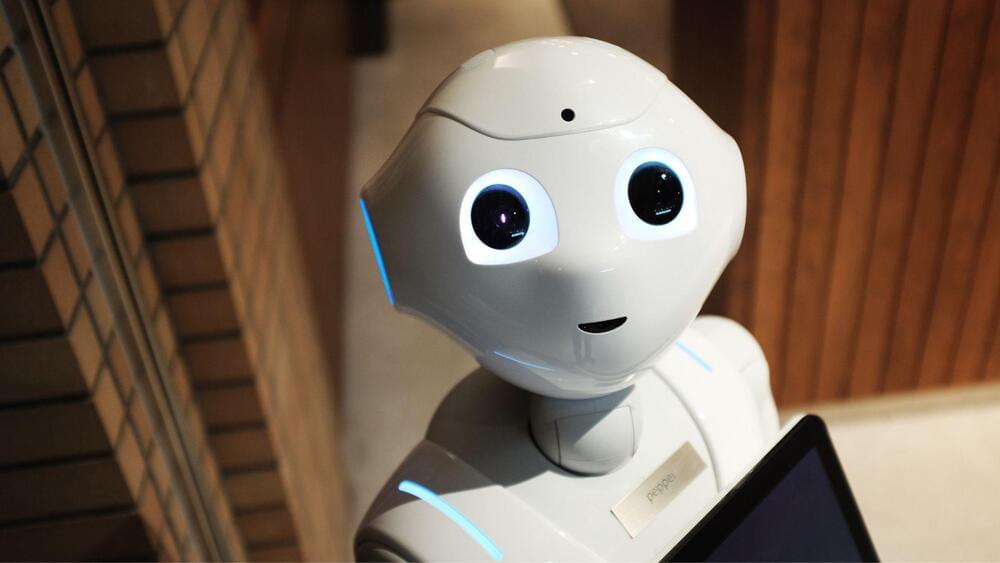
Researchers hope the new app can help bridge the gap between supply and demand for mental health support.
Asking an AI chatbot to give a rundown on Napoleonic wars is fine. But using a chatbot service for a therapy session?
Even ChatGPT suggests going to a traditional mental health practitioner when you pour your heart out to the AI – perhaps because the most important element of therapy is the client-therapist relationship.

The announcement comes shortly after IBM announced it would replace 7,800 jobs with AI.
After IBM’s CEO, earlier this month, announced that the company could easily replace at least 7,800 human personnel with artificial intelligence (AI) over the next five years, another startling announcement in the ‘Will AI replace humans’ debate has come to the fore.
BT, a prominent British multinational telecommunications firm, said it will become a ‘leaner business’ as it announced its plans to shed up to 55,000 jobs by the end of the decade, mostly in the United Kingdom. The company also announced that approximately 10,000 of its workforce will be replaced by AI, said a report by The Guardian.

According to RollingStone, and other news outlets, a group of students at Texas A&M University-Commerce’s graduations is in question after being accused of using ChatGPT for their essays.
A Texas A&M University-Commerce professor has taken drastic action to fail all his students after suspecting them of using ChatGPT to write their papers. This decision has now delayed them from passing their diplomas. According to RollingStone, the professor, Dr. Jard Mumm, the decision appears flawed as he used the natural language processing software to analyze each essay and judge whether it generated it.
Glegorly/iStock.
“I copy and paste your responses in [ChatGPT], and [it] will tell me if the program generated the content,” the professor wrote in the email. He went on to say that he had tested each paper twice. Dr. Mumm then went on to offer the class a makeup assignment to avoid the failing grade — which could otherwise, in theory, threaten their graduation status.
